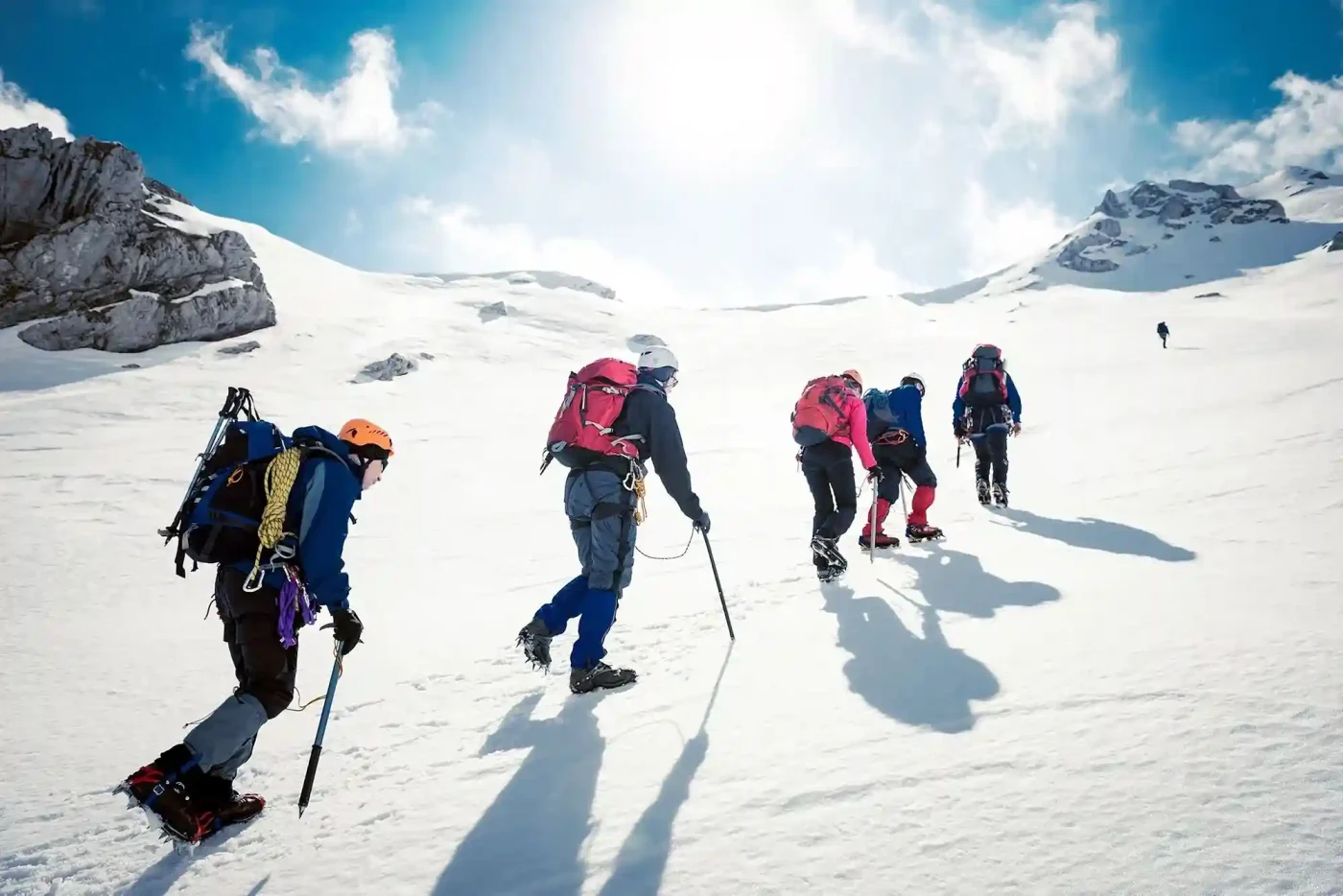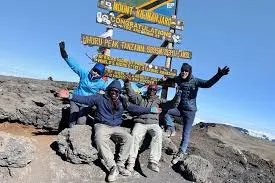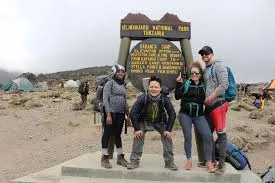Main Causes of Death on Kilimanjaro Climbs: Stay Safe
To stay safe on Kilimanjaro, be aware of the main risks such as altitude sickness, dehydration, and exhaustion. Ascend gradually to allow your body to acclimatize, monitor your health closely, and communicate any symptoms to your guide immediately. Follow proper hygiene, eat well, and get adequate rest to maintain strength throughout the trek. Below is a detailed overview of the main causes of death on Kilimanjaro climbs and essential safety tips to help you prepare for a 6–9 day trek with Capable Africa Tours.
Plan Your Safe Trek Now
Why Safety Matters on Kilimanjaro Climbs
Mount Kilimanjaro, standing at 5,895 meters (19,341 feet), attracts over 50,000 climbers annually. While most treks are safe, the mountain’s high altitude and challenging terrain pose risks. Data estimates 3–10 deaths occur yearly, translating to a death rate of 0.01–0.02% (10–20 per 100,000 climbers). The primary causes—altitude-related illnesses, falls, and pre-existing medical conditions—can be mitigated with proper preparation and guidance. Capable Africa Tours prioritizes safety through experienced guides, daily health checks, and longer itineraries for better acclimatization.
Key Safety Highlights
- Altitude Illnesses: AMS, HAPE, and HACE are the leading causes of fatalities, preventable with slow ascents.
- Low Death Rate: Less than 0.02% of climbers face fatal risks, with proper guidance reducing this further.
- Expert Guidance: Capable Africa Tours employs trained guides with a 1:2 guide-to-climber ratio.
- Safety Equipment: Oxygen tanks, pulse oximeters, and first aid kits are standard on our treks.
- Acclimatization Focus: 7–8 day routes like Lemosho boost summit success to 85–90%.
Main Causes of Death on Kilimanjaro
Understanding the main risks on Kilimanjaro can help climbers take precautions and stay safe. The most common causes of death are altitude-related illnesses, such as Acute Mountain Sickness (AMS), High Altitude Pulmonary Edema (HAPE), and High Altitude Cerebral Edema (HACE). Other risks include extreme weather exposure, dehydration, and accidents during steep or slippery sections of the trek. Proper acclimatization, pacing, hydration, and following guide instructions are essential to minimize these dangers. Below is a detailed overview of the main causes of death on Kilimanjaro, designed to help you stay informed and prepared during your 6–9 day trek with Capable Africa Tours.
1. Acute Mountain Sickness (AMS)
AMS occurs due to low oxygen levels at high altitudes, affecting 50–75% of climbers to varying degrees. Symptoms include headaches, nausea, fatigue, and dizziness. If untreated, AMS can escalate to life-threatening HAPE or HACE.
- Prevalence: 50–75% of climbers experience mild AMS; 1–2% develop severe cases.
- Risk Factors: Rapid ascent, poor hydration, and inadequate acclimatization.
- Prevention: Choose longer routes (7–8 days), stay hydrated (3–4L water daily), and consider Diamox (125–250 mg daily).
- Capable Africa Tours Approach: Daily pulse oximeter checks and slow ascents on routes like Lemosho.
2. High Altitude Pulmonary Edema (HAPE)
HAPE involves fluid buildup in the lungs, causing severe shortness of breath, coughing, and fatigue. It affects 1–2% of climbers above 4,000 meters and is a leading cause of death if not treated promptly.
- Prevalence: 1–2% of climbers; fatal in 40% of untreated cases.
- Symptoms: Blue lips, frothy cough, rapid heart rate, and extreme fatigue.
- Treatment: Immediate descent (500–1,000m), oxygen therapy, and nifedipine (20 mg).
- Capable Africa Tours Approach: Guides carry oxygen tanks and monitor for early HAPE signs.
3. High Altitude Cerebral Edema (HACE)
HACE is brain swelling from altitude, causing confusion, loss of coordination, and unconsciousness. It’s rare (0.5–1% of climbers) but deadly without rapid intervention.
- Prevalence: 0.5–1% of climbers; fatal in 50% of untreated cases.
- Symptoms: Severe headache, confusion, ataxia (unsteady walking), and seizures.
- Treatment: Immediate descent, oxygen, and dexamethasone (8 mg).
- Capable Africa Tours Approach: Trained guides recognize HACE early and initiate evacuation protocols.
4. Falls and Injuries
Falls on steep sections like the Barranco Wall or during summit night are rare but can be fatal. Injuries from loose rocks or fatigue contribute to 5–10% of serious incidents.
- Prevalence: Less than 5% of climbers face serious falls; fatalities are under 0.01%.
- Risk Factors: Fatigue, poor footwear, and inexperience on rocky terrain.
- Prevention: Use trekking poles, wear high-ankle boots, and follow guide instructions.
- Capable Africa Tours Approach: Guides assist on technical sections and ensure proper gear use.
5. Pre-existing Medical Conditions
Heart attacks, strokes, or complications from chronic conditions (e.g., asthma, diabetes) account for 10–15% of Kilimanjaro deaths, often triggered by altitude stress.
- Prevalence: 10–15% of fatalities; higher in climbers over 50.
- Risk Factors: Undisclosed heart or lung conditions, inadequate medical clearance.
- Prevention: Consult a doctor, disclose conditions, and carry necessary medications.
- Capable Africa Tours Approach: Pre-trek health questionnaires and tailored safety plans.
Other Risks
- Hypothermia: Rare (less than 1%), but possible during summit night (0–20°F). Wear layered clothing and a down jacket.
- Dehydration: Contributes to 20% of AMS cases. Drink 3–4L daily.
- Rockfall: Minimal risk (under 0.01%) on routes like Lemosho, avoided by sticking to marked trails.
Watch: Kilimanjaro Safety Tips in Action
See how Capable Africa Tours ensures climber safety on Kilimanjaro with expert guides, daily health checks, and essential equipment in this informative video.
How to Stay Safe on Kilimanjaro
To stay safe on Kilimanjaro, acclimatize gradually to prevent altitude sickness, listen to your body, and communicate any symptoms to your guides immediately. Stick to established trails, use trekking poles to reduce strain, and dress in layers to adapt to changing weather. Carry a basic first-aid kit, follow hygiene practices to prevent illness, and ensure your guides are aware of any medical conditions. Below is a comprehensive guide to staying safe during your 6–9 day Kilimanjaro trek with Capable Africa Tours.
Safety Tips for Climbers
- Choose Longer Routes: Opt for 7–8 day routes like Lemosho for better acclimatization (85–90% success rate).
- Stay Hydrated: Drink 3–4L of water daily to reduce AMS risk by 20%.
- Monitor Symptoms: Report headaches, nausea, or fatigue to guides immediately.
- Use Proper Gear: Wear layered clothing, high-ankle boots, and trekking poles.
- Train Adequately: Build endurance with 4–5 weekly cardio sessions (45–60 min) and practice hikes.
- Medical Clearance: Consult a doctor if over 50 or with chronic conditions.
- Follow Guides: Stick to marked trails and heed guide instructions on technical sections.
Capable Africa Tours’ Safety Measures
- Experienced Guides: 1:2 guide-to-climber ratio, trained in altitude illness detection.
- Daily Health Checks: Pulse oximeter and symptom assessments at camps.
- Emergency Equipment: Oxygen tanks, first aid kits, and stretchers on every trek.
- Evacuation Plans: Pre-arranged routes and ranger coordination for rapid descent.
- Eco-Conscious Practices: Safe trails and sustainable trekking to minimize environmental risks.
Choosing the Safest Kilimanjaro Route
Route choice impacts safety and success. Longer routes like Lemosho and Rongai offer gradual ascents, reducing altitude-related risks. Capable Africa Tours recommends these for safer climbs.
Route Safety Comparison
| Route | Duration | Success Rate | Safety Features |
|---|---|---|---|
| Lemosho | 7–8 days | 85–90% | Gradual ascent, low crowds, diverse terrain |
| Rongai | 6–7 days | 80–85% | Remote, gentle slopes, good acclimatization |
| Machame | 6–7 days | 75–80% | Moderate crowds, steeper sections |
| Marangu | 5–6 days | 60–70% | Hut-based, faster ascent, higher AMS risk |
Climb Kilimanjaro Safely with Capable Africa Tours
Join Capable Africa Tours for a secure Kilimanjaro adventure. Our expert guides, safety equipment, and longer itineraries ensure a safe climb to Uhuru Peak. Book now for peace of mind!
- 90% summit success rate with 8-day itineraries
- Daily health checks and oxygen tanks included
- Experienced guides trained in altitude emergencies
- Eco-friendly treks supporting local communities
- Customizable packages for all fitness levels
Limited spots for safe Kilimanjaro treks — book now to conquer the mountain!
Plan Your Trek Now


